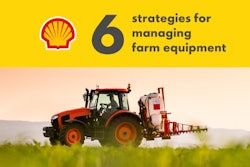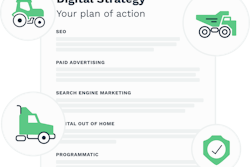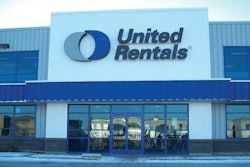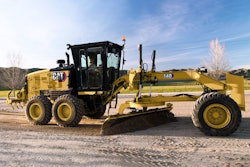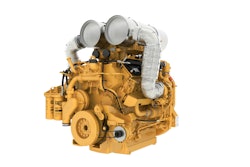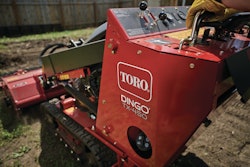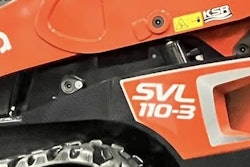
Guest article from Performance Brokerage Services.
Selling a dealership is a pivotal event that can significantly impact your life and your family's financial future. For many dealers, the dealership constitutes a large portion of their family’s net worth, making the sale a critical moment to secure the future for their loved ones.
While the process of selling a dealership isn't inherently difficult, it is highly complex and laden with emotional and psychological factors. Concerns about the treatment of employees and customers, along with the intricacies of the buy-sell process, add to the challenge. Therefore, managing the sale with care and diligence, ideally with the help of experienced professionals, is crucial.
Performance Brokerage Services, the highest-volume dealership brokerage firm in North America, has successfully completed 84 dealership sales in 2023 alone. Below is a high-level outline of the buy-sell process for a traditional asset sale, designed to help you maximize value, achieve your goals, and minimize pitfalls.
1. Go Backward to Start
Before diving into the selling process, take a moment to step back and evaluate your personal and business goals. What would an ideal sale look like for you, your family, your team, your community, and your manufacturers and suppliers? Understanding these goals is crucial to assess how well a prospective buyer can meet your expectations.
2. Assemble Your Selling Team
It’s essential to surround yourself with a trusted team of advisors. This team should include an attorney, an accountant, a financial planner, and a dealership broker, each bringing their own expertise to the table. This collaborative approach not only protects your interests but also allows you to maintain focus on your dealership's day-to-day operations and performance.
3. Information Gathering
Providing prospective buyers with ample information is key to facilitating a smooth evaluation process. This information should include financial data, assets, inventories (including lease fleet details), real estate, manufacturer agreements, and contracts. By demonstrating that you are organized and transparent, you can instill confidence in buyers. Working with a dealership broker to create a Confidential Information Memorandum (CIM) is advisable; this document should be shared only after securing a signed Non-Disclosure Agreement (NDA) from potential buyers.
4. Marketing Strategy
Develop a tailored marketing strategy that aligns with your specific goals. While the sale may be primarily price-driven, consider other factors, such as identifying a buyer whose values align with yours, the potential for leasing real estate, or the inclusion of family members in a non-compete clause. Keep in mind that the greater the number of disclosures, the higher the likelihood of confidentiality breaches.
5. Buyer Filtration
The buy-sell process can be lengthy and emotionally charged, necessitating a high level of trust between both parties. Filtering prospective buyers is critical, as not all may have the financial resources or operational experience necessary for a successful transaction. Rely on your advisory team to help identify red flags and ensure that you select a buyer who meets your standards.
6. Letter of Intent (LOI)
The LOI serves as a non-binding agreement outlining the major components of the transaction as agreed upon by both parties. It is essential to prepare a detailed LOI, as it will guide attorneys in drafting the Definitive Agreements. While some items within the LOI may be binding, such as confidentiality and exclusivity provisions, it’s crucial to assess the overall terms, not just the goodwill amount. The best buyer may not always be the one who offers the highest price, but rather the one who best aligns with your goals.
7. Definitive Agreements
Following the LOI, attorneys will prepare the Definitive Agreements, including an Asset Purchase Agreement (APA) and a Real Estate Purchase Agreement (REPA) or Lease Agreement. Given that these documents are binding, they require multiple rounds of revisions. Utilizing a comprehensive LOI and remaining actively involved in negotiations can help expedite this step.
8. Due Diligence Period
Once the LOI or Definitive Agreements are executed, the due diligence period begins. During this time, buyers will have the right to inspect your dealership's books, records, assets, and facilities. Documents such as appraisals, environmental studies, and title reports may also be requested. While it's important to cooperate during this phase, do not lose sight of your dealership's operations. Maintain focus on maximizing performance to ensure the best possible outcome.
9. Manufacturer Approval
After completing due diligence, notify the manufacturers of your intent to sell. Your attorney may submit a letter authorizing the manufacturers to communicate directly with the buyer. Once the buyer is approved, you can inform your employees and introduce them to the new owner, allowing for a smooth transition.
10. Closing
You may choose to close the dealership for a day to finalize the sale. Closing tasks will include inventory adjustments, employee hiring, utility contract assumptions, signing escrow documents, securing lien releases, and transferring funds. It’s essential to ensure that all loose ends are tied up for a successful transition.
Post-Closing Considerations
After the sale is finalized, you can finally take a moment to breathe. However, certain responsibilities will remain yours, including settling accounts payable, collecting receivables, managing service and finance chargebacks, and maintaining necessary business records.
In summary, while the dealership selling process is intricate and multifaceted, understanding each step can help you navigate it effectively. Key takeaways include the importance of your advisory team, the necessity of thorough preparation, and the value of patience and transparency throughout negotiations. Always keep your focus on achieving your goals and running your business as if it were not for sale. Following this roadmap will help you successfully reach your destination and secure your financial future.
